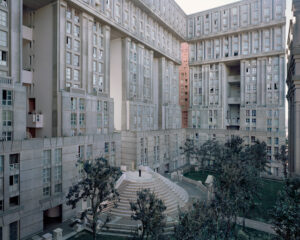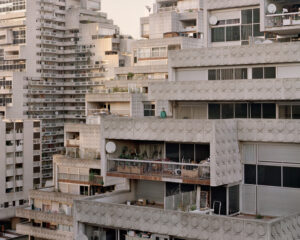In December 2005, then would-be Prime Minister David Cameron faced down Tony Blair in the House of Commons by telling him: “You were the future once.”
Because it was true, it stung as a criticism and it stuck as a soundbite. But it also contained something deeper – the inescapable truth that, no matter how shiny with promise the future may seem, the lustre will probably fade with time.
Both Noritaka Minami and Laurent Kronental are interested in this tarnishing process, and both have undertaken long-term projects documenting buildings that once stood for hope and progress. Minami’s 1972, which has just been published as a book, focuses on the Nakagin Capsule Tower in Tokyo’s Shimbashi district.

Designed by the Metabolist architect Kisho Kurokawa, it symbolised a future in which design would stimulate social change, based around efficiency and equality. With 140 dwellings arranged between its 13 floors, each home measured just 2.3m x 3.8m x 2.1m, and they came equipped with built-in furniture (including a toothbrush).
Minami hadn’t originally intended to shoot the Nakagin tower. He first went to see it in 2010 as part of a planned project on the lost technological promise of the 1970 World Expo, which was held in his hometown of Osaka. But touring the tower during one of the hottest summers of recent years, he found himself entranced. “It was very intense,” he remembers.

“I was blown away in terms of the atmosphere of the first room that I saw, and just how loaded in history it was. Beyond the window you see the latest skyscrapers designed by Richard Rogers and Jean Novel, but inside you see this retro-futurism which is very interesting.”
The last photograph in the book shows the tower surrounded by the gleaming edifices of modern-day Tokyo, but the majority of the pictures show the building’s interior, up the stairwells, through the hallways and into the tiny apartments themselves.
